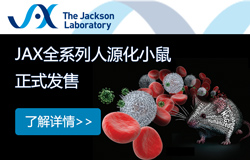百歐林簡(jiǎn)報(bào)-表界面科學(xué)最新文獻(xiàn)- QSense -2019年第14期
百歐林簡(jiǎn)報(bào)-表界面科學(xué)最新文獻(xiàn)- QSense -2019年第14期
Journal:Food Hydrocolloids
Journal:Journal of Peptide Science
Journal:Colloids and Surfaces B: Biointerfaces
Journal:Science Advances
Journal:Advanced Biosystems
Journal:ACS Applied Materials & Interfaces
Journal:Scientific Reports
Journal:RSC Advances
Link:https://pubs.rsc.org/en/content/articlelanding/2019/RA/C9RA05464B#!divAbstract
Journal:Composites Part B: Engineering
Journal:Journal of Colloid and Interface Science
Journal:Journal of Membrane Science
Journal:European Journal of Pharmaceutics and Biopharmaceutics
Journal:The Journal of Physical Chemistry C
Journal:Fuel
- Name:Study on β-lactoglobulin microgels adsorption onto a hydrophobic solid surface by QCM-D
Journal:Food Hydrocolloids
- 10.1016/j.foodhyd.2019.105320
- :Microgel particles formed from β-lactoglobulin (Blg) are able to stabilize Pickering emulsions, yet their interfacial properties have not been fully characterized. In this study, quartz crystal microbalance with dissipation (QCM-D) was employed to investigate adsorption behavior of Blg microgels on a hydrophobic solid surface. The QCM-D results showed that adsorption efficiency of the microgels was strongly dependent on the particle charge and the ionic strength of the aqueous phase. The adsorption of weakly charged Blg microgels (pH 5.6) was characterized by highly covered particles, producing a relative rigid monolayer at the interface…
- Name:The effect of end‐group substitution on surface self‐assembly of peptides
Journal:Journal of Peptide Science
- 10.1002/psc.3212
- :Biofouling, the undesirable accumulation of organisms onto surfaces, affects many areas including health, water, and energy. We previously designed a tripeptide that self‐assembles into a coating that prevents biofouling. The peptide comprises three amino acids: DOPA, which allows its adhesion to the surface, and two fluorinated phenylalanine residues that direct its self‐assembly into a coating and acquire it with antifouling properties. This short peptide has an ester group at its C‐terminus. To examine the importance of this end group for the self‐assembly and antifouling properties of the peptide, we synthesized and characterized tripeptides with different end groups (ester, amide, or carboxylic group) …
- :https://onlinelibrary.wiley.com/doi/full/10.1002/psc.3212
- Name:Protein film formation on cell culture surfaces investigated by quartz crystal microbalance with dissipation monitoring and atomic force microscopy
Journal:Colloids and Surfaces B: Biointerfaces
- 10.1016/j.colsurfb.2019.110447
- :Biofouling, the undesirable accumulation of organisms onto surfaces, affects many areas including health, water, and energy. We previously designed a tripeptide that self‐assembles into a coating that prevents biofouling. The peptide comprises three amino acids: DOPA, which allows its adhesion to the surface, and two fluorinated phenylalanine residues that direct its self‐assembly into a coating and acquire it with antifouling properties. This short peptide has an ester group at its C‐terminus. To examine the importance of this end group for the self‐assembly and antifouling properties of the peptide, we synthesized and characterized tripeptides with different end groups (ester, amide, or carboxylic group) …
- :https://www.sciencedirect.com/science/article/pii/S0927776519305910
- Name:Exploiting mammalian low-complexity domains for liquid-liquid phase separation-driven underwater adhesive coatings
Journal:Science Advances
- 10.1126/sciadv.aax3155
- :Many biological materials form via liquid-liquid phase separation (LLPS), followed by maturation into a solid-like state. Here, using a biologically inspired assembly mechanism designed to recapitulate these sequential assemblies, we develop ultrastrong underwater adhesives made from engineered proteins containing mammalian low-complexity (LC) domains. We show that LC domain–mediated LLPS and maturation substantially promotes the wetting, adsorption, priming, and formation of dense, uniform amyloid nanofiber coatings on diverse surfaces (e.g., Teflon), and even penetrating difficult-to-access locations such as the interiors of microfluidic devices…
- :https://advances.sciencemag.org/content/5/8/eaax3155.abstract
- Name:Supramolecular Presentation of Hyaluronan onto Model Surfaces for Studying the Behavior of Cancer Stem Cells
Journal:Advanced Biosystems
- 10.1002/adbi.201900017
- :The supramolecular presentation of extracellular matrix components on surfaces provides a platform for the investigation and control of cell behavior. Hyaluronan (HA) is one of the main components of the extracellular environment and has been shown to play an important role in different cancers and their progression. However, current methods of HA immobilization often require its chemical modification. Herein, a peptide‐based self‐assembled monolayer (SAM) is used as an anchor to immobilize unmodified HA on a bare gold surface, as demonstrated by the quartz crystal microbalance with dissipation monitoring…
- Name:Surface-Bound Antibiotic for the Detection of β-Lactamases
Journal:ACS Applied Materials & Interfaces
- 10.1021/acsami.9b05793
- :Antimicrobial resistance (AMR) has been identified as a major threat to public health worldwide. To ensure appropriate use of existing antibiotics, rapid and reliable tests of AMR are necessary. One of the most common and clinically important forms of bacterial resistance is to β-lactam antibiotics (e.g., penicillin). This resistance is often caused by β-lactamases, which hydrolyze β-lactam drugs, rendering them ineffective. Current methods for detecting these enzymes require either time-consuming growth assays or antibiotic mimics such as nitrocefin …
- Name:Unveiling the multi-step solubilization mechanism of sub-micron size vesicles by detergents
Journal:Scientific Reports
- 10.1101/638189
- :The solubilization of membranes by detergents is critical for many technological applicationsand has become widely used in biochemistry research to induce cell rupture, extract cell constituents,and to purify, reconstitute and crystallize membrane proteins. The thermodynamic detailsof solubilization have been extensively investigated, but the kinetic aspects remain poorlyunderstood. Here we used a combination of single-vesicle Förster resonance energy transfer(svFRET), fluorescence correlation spectroscopy and quartz-crystal microbalance with dissipationmonitoring to access the real-time kinetics and elementary solubilization steps of sub-micronsized vesicles, which are inaccessible by conventional diffraction-limited optical methods…
- Name:PPEGMEMA-based cationic copolymers designed for layer-by-layer assembly
Journal:RSC Advances
- 10.1039/C9RA05464B
Link:https://pubs.rsc.org/en/content/articlelanding/2019/RA/C9RA05464B#!divAbstract
- Name:Insight into the dispersive mechanism of Carboxylated Nanofibrilllated cellulose for individual montmorillonite in water
Journal:Composites Part B: Engineering
- 10.1016/j.compositesb.2019.107399
- :Carboxylated nanofibrillated cellulose (CNFC) has emerged as a promising green dispersant to prepare stable aqueous individual montmorillonite (MMT) suspensions. Nevertheless, its underlying dispersive mechanism remains elusive. Herein, we attempt to unveil the dispersive mechanism of CNFC for individual MMTs in water by characterizing the interfacial interactions between the two components using a quartz crystal microbalance with dissipation monitoring (QCM-D) and an atomic force microscopy (AFM). Both electrostatic repulsion and steric hindrance contribute to the excellent stability of homogeneous individual MMT suspensions, and their individual contributions are dependent upon the dosage of CNFC dispersant…
- Name:Role of protein-cellulose nanocrystal interactions in the stabilization of emulsion
Journal:Journal of Colloid and Interface Science
- 10.1016/j.jcis.2019.09.002
- :
- :https://www.sciencedirect.com/science/article/pii/S0021979719310318
- Name:Crown ether containing polyelectrolyte multilayer membranes for lithium recovery
Journal:Journal of Membrane Science
- 10.1016/j.memsci.2019.117432
- :Achieving solute selectivity has always been a goal of membrane development studies. The continuing growth of global consumption of scarce metals by different industries has put a strain on traditional sources of these species. Achieving cation selectivity in membranes, especially among monovalent cations, is a major step in introducing alternative sources for scarce metals such as lithium…
- Name:Impact of polyethylene glycol polymers on the physicochemical properties and mucoadhesivity of itraconazole nanoparticles
Journal:European Journal of Pharmaceutics and Biopharmaceutics
- 10.1016/j.ejpb.2019.09.004
- :Itraconazole (ITR) is a broad-spectrum antifungal drug with a very low solubility. In this work, the application of a heat induced evaporative antisolvent nanoprecipitation process yielded disordered nanoparticles (NPs) of ITR. The inclusion of different types of poly(ethylene glycol) (PEG) allowed PEGylation of NPs by adsorption to be achieved. The NP dispersions were composed of monodispersed particles in a nanometric size range (<290 nm) and although PEGylation had no impact on the average particle size, the surface potential was partially neutralised in the modified NPs…
- Name:Metal Chelating Polymer Thin Films by Surface-Initiated ROMP and Modification
Journal:The Journal of Physical Chemistry C
- 10.1021/acs.jpcc.9b06410
- :We report the surface initiated ring-opening metathesis polymerization (SiROMP) of hydroxamic-acid containing, metal-chelating polymer thin films. SiROMP of trans-5-norbornene-2,3-dicarbonyl chloride (NBDAC) is introduced as a versatile platform to achieve many functional polymer films via simple exposure of the pNBDAC film to reagents. This modification strategy owes its success to the fast and high-yield reaction of acyl chlorides with alcohols, amines, water, and other molecules…
- Name:Molecular interaction between asphaltene and quartz with different surface wettability: A combined study of experimental measurement and theoretical calculation
Journal:Fuel
- 10.1016/j.fuel.2019.115937
- :There is a limited understanding with respect to the relationship between asphaltene adsorption/deposition and surface wettability at a molecular level, which could lead to a serious restriction of the development of heavy oil recovery techniques. In this study, the adsorption behavior of a model compound asphaltene (C5Pe) and the detachment process of C5Pe during waterflooding were investigated in different wettability conditions…
- :https://www.sciencedirect.com/science/article/pii/S001623611931289X
Copyright(C) 1998-2024 生物器材網(wǎng) 電話:021-64166852;13621656896 E-mail:info@bio-equip.com






